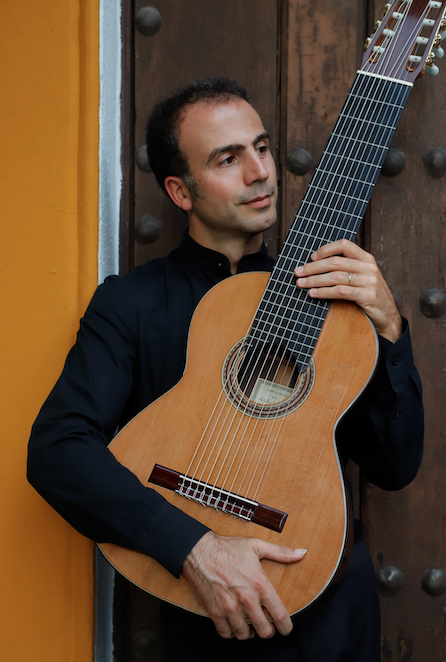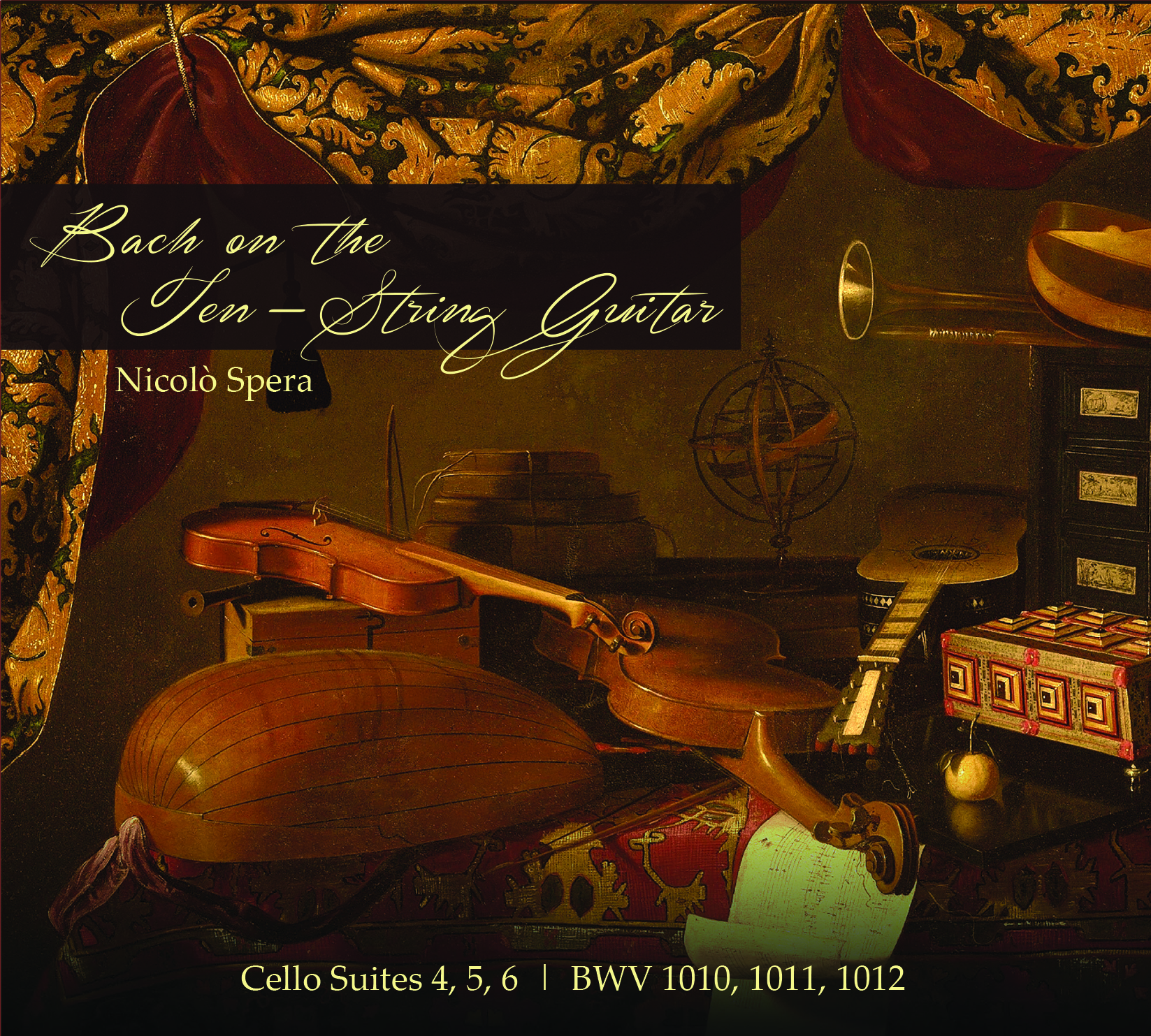
| Physical CD 16.99 US | Digital Download | |
 |  Amazon Amazon | |
Domestic (US) orders only | ||
| Cadenza sospesa | 01. | Filippo Del Corno: Cadenza sospesa 13:44 | |
| Dis-simulazioni | 02. | Nicola Jappelli: Dis-simulazioni 13:13 | |
| Sous les jardins du ciel | 03. | Umberto Bombardelli: Sous les jardins du ciel 8:32 | |
| Giacomo Susani: Suite per la Cappella degli Scrovegni | |||
| Volta Celeste | 04. | I. Volta Celeste 1:46 | |
| Il sogno di Gioacchino | 05. | II. Il sogno di Gioacchino 1:55 | |
| Annunciazione | 06. | III. Annunciazione 4:08 | |
| Strage degli Innocenti | 07. | IV. Strage degli Innocenti 3:27 | |
| Lavanda dei piedi | 08. | V. Lavanda dei piedi 2:13 | |
| Pentecoste | 09. | VI. Pentecoste 2:52 | |
| Giudizio Universale | 10. | VII. Giudizio Universale 2:55 | |
| L'ottavo giorno | 11. | VIII. L'ottavo giorno 2:20 | |
Total Playing Time: 57:05 | |||

Cadenza sospesa (2024)
Cadenza sospesa explores two of the possible meanings generated by the juxtaposition of the terms in the title.
In the language of tonal harmony, the rhetorical characterization of a momentary and almost doubtful stop in the flow of musical discourse is attributed to the processes that end on dominant functions. Such processes are defined exactly as “suspended cadences.”
From a broader perspective, the term cadenza recalls instead a virtuosic episode, similar if not actually coinciding with the practice of improvisation. It is an episode placed within concertante forms, whose adjective \"suspended\" could evoke its sudden or unmotivated interruption.
The ambiguity of this double interpretation has suggested a musical path where a harmonic process that always leads back to dominant functions is constantly hovering, in a more or less explicit form. The dominant functions are interpolated by passages that explore their possible premises and consequences, simulating instrumental gestures of only apparently improvisational character.
Cadenza sospesa was written for, but in this case it would be more appropriate to say with, Nicolò Spera.
—Filippo del Corno
Dis/simulazioni (2024)
To hide, to conceal, to cleverly disguise: to dissimulate. A delicate inner voice that reacts to the harshness and complexity of existence: perhaps veiling, obscuring and eclipsing what could hurt and embitter too much, but without refraining from experiencing contrasts, disagreements and frictions. To conceal, while courageously going through hardships and adversities.
Dis/simulazioni is a piece in a traditional A-B-A architecture, with a varied reprise: from the ancient matrix of this form, attempts to space it, force it, expand it in a poetic and expressive sense generate, while investigating sounds and colors that reveal the timbrical and harmonic richness of the ten-string guitar.
—Nicola Jappelli
Sous les jardins du ciel (2023)
Sous les jardins du ciel for ten-string guitar (Yepes tuning) was requested by Nicolò Spera and cordially dedicated to him. The writing, as commissioned, draws inspiration from the fourth Cantiga - del Azahar - by Maurice Ohana, for choir and instruments. I was immediately struck by the ecstatic tone of Ohana’s piece and the beauty of the lyrics (dating back to 15th-century Spain). The richness of harmonic resonances of the instrument for which the new piece was intended, then, immediately seemed to me suitable to write a piece that would preserve at least part of the evocativeness of Ohana’s pages.
Thus, the piece constitutes first and foremost a sort of study on the sonority of the instrument and the musical character of each individual string. Furthermore, the great extension and the particular tuning of the ten-string guitar allow the creation of original timbral situations by superimposing real sounds arranged according to the natural harmonic series.
The formal structure of Sous les jardins du ciel traces that of Cantiga IV. In each section, a musical cue connected to a specific textual data (in particular the various types of flowers mentioned in the Cantiga) and/or to a specific texture of the choral piece (monody, polyphony, concordance), is thus emphasized/elaborated.
In the first two bars, the guitar presents a brief figure in double octaves which - always slightly modified - will return several times during the piece: it will constitute a sort of clausula that divides and connects its various parts, contrasting decidedly with the meditative and ecstatic tone of some sections.
At other points in the piece, the intensity of the musical and poetic vision translates into a burst of dynamic and agogic energy.
At last, the ending section - where the fixity of two harmonic sounds in dialogue with a sparse melodic line in the low register prevails - makes dramatically manifest the presence of that omnipresent harmonic halo, which constitutes the main and most fascinating characteristic of the ten-string guitar.
—Umberto Bombardelli
Suite per la Cappella degli Scrovegni (2023)
This large piece for 10-string guitar has been a particularly important project of mine. I was faced with the great challenge to dialogue with the artistic and intellectual depth of Giotto’s frescoes for the Scrovegni Chapel of Padua, and the cultural vastness that they bring with them. My inspiration was threefold.
This composition is firstly based on the iconographic events represented in the Chapel: I selected some moments of the narration of the stories of Joaquim, Anne, Mary and Jesus, which, in Giotto’s rendition, I found most moving and powerful. Each selection gives the title to the movements of my piece.
The second major inspiration was a musical one: the work of Marchetto da Padova, specifically his Motet Ave Regina Caelorum, which some scholars believe was composed for the opening of the Chapel in 1305. I took a few fragments from his music and used them in the texture of my piece, sometimes by clearly presenting them, sometimes by hiding them behind my own musical ideas.
Finally, it was inspired by philosophy: the expression of the theological foundation on which the Chapel was conceived. 8 movements - like the 7 vices and virtues that are represented below the main frescoes and which accompany human earthly experience - plus 1 last episode, the “8th day” that completes the journey of human spiritual growth and, according to the conception of the world in 14th Century Italy, marks the end of temporality.
An important note: this is not a religious piece. It embraces the represented religious symbolism from a purely intellectual perspective and explores its universal meaning entirely free from doctrinal relationships. It is the free work of an artist’s mind.
—Giacomo Susani


